2023 Toyota Sequoia: A curious case of 3-row seating
Toyota unveiled the 2023 Sequoia on Tuesday, marking the first redesign of the full-size SUV since the 2008 model year. Toyota’s largest vehicle without a bed makes a big leap under the hood but that leap causes some challenges in the two rows behind the driver’s seat.
A lot has changed in 15 years, and Toyota’s most significant upgrade has been to equip the new Sequoia with a standard hybrid powertrain shared with the Toyota Tundra pickup truck.
Now all of Toyota’s three-row vehicles come with a hybrid powertrain. The 2022 Toyota Highlander can be had with a 243-hp 2.5-liter inline-4 with two electric motors and a 1.9-kwh battery pack. The 2022 Toyota Sienna minivan uses the same system as standard gear, and both models get an EPA-rated 36 mpg combined with front-wheel drive, or 35 mpg for all-wheel drive. They are the most efficient family haulers offered without a plug.
The EPA has not certified fuel economy ratings for either the Tundra or the Sequoia, but expect the big rigs with the bigger powertrains to get in the low 20s.
The Sequoia uses a 3.5-liter twin-turbo V-6 with a single motor making 437 hp and 583 lb-ft of torque that comes on at just 2,400 rpm. Toyota prioritized torque over efficiency, but expect vast improvements in both over the outgoing V-8.

2023 Toyota Sequoia

2023 Toyota Sequoia
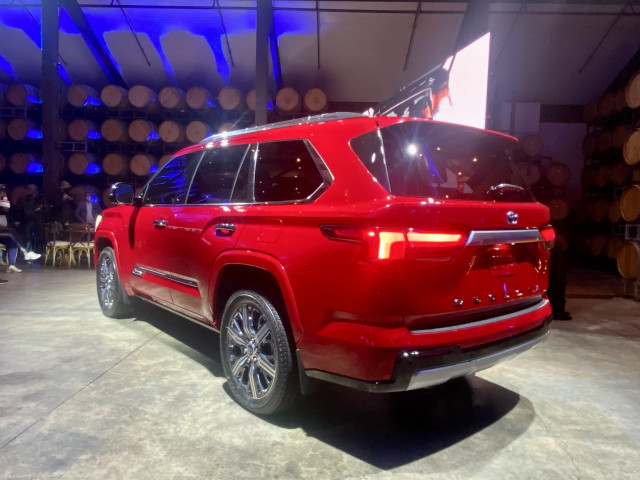
2023 Toyota Sequoia
Built on the Tundra’s ladder frame, the new Sequoia’s single-motor hybrid system uses a parallel design that allows the electric motor and the combustion engine to shuttle torque to the wheels through a 10-speed automatic and a torque converter. In short, power delivery is more direct, In our testing with the Tundra Hybrid, it provided EV driving at low speeds or a light throttle, but with a heavy foot the motor supplements engine torque for brisk acceleration or for towing without a hiccup off the line.
In the Sienna and Highlander, the 2-motor series design uses a type of CVT with a planetary gear meant to optimize fuel efficiency more than torque. In the Sienna, the same battery pack sits below the front seats; in the Highlander Hybrid, it’s mounted below the second seats.
The Sequoia’s body-on-frame construction allowed for the larger powertrain setup, yet Toyota moved the 1.9-kwh nickel-metal hydride battery pack from below the second row in the crew cab Tundra to below the third-row seats in the Sequoia. This created both compromise and opportunity in the eight seater.
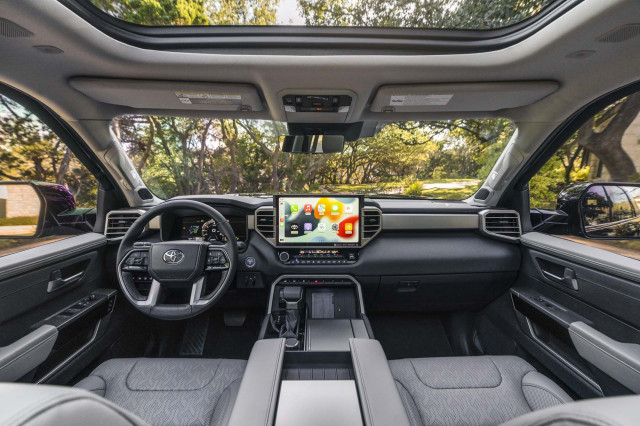
2023 Toyota Sequoia
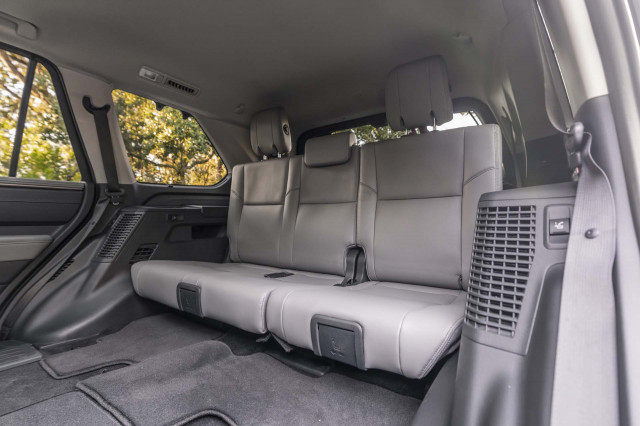
2023 Toyota Sequoia

2023 Toyota Sequoia

2023 Toyota Sequoia
Bench seats come standard in both rear rows. Captain’s chairs can be swapped out for the second-row bench for a seven-seat setup. In either configuration, the second-row seats don’t slide forward. Nor is there a pushbutton release to tumble the second row forward, as in so many other three-row SUVs. From the back, third-row passengers pull a strap mounted at the base of the seat, which may be challenging for grade schoolers; same with the large durable lever on the seat side to access the third row from the door. The redesigned Lexus LX uses the same design. A pushbutton slider would be much easier.
Toyota did not disclose specs such as leg room and head room at the debut, but the fixed seats offer plenty of leg and shoulder space for a 6-footer even with the front seats moved all the way back. But the top Capstone model with a panoramic sunroof on display cramped head room for that same 6-footer. Being able to slide the seat back a couple inches would clear the brace for the sunroof and allow more room; being able to move it forward a couple inches would put the occupant’s head in the recess of the sunroof, even when closed. There was maybe an inch of clearance between head and roof.
Instead, Toyota put the 60/40-split third-row seats on sliders, capable of moving either side by 6.0 inches. Toyota calls it an industry first, but it may also be an industry first outside of the Toyota brand to not be able to fold the third row into the floor.
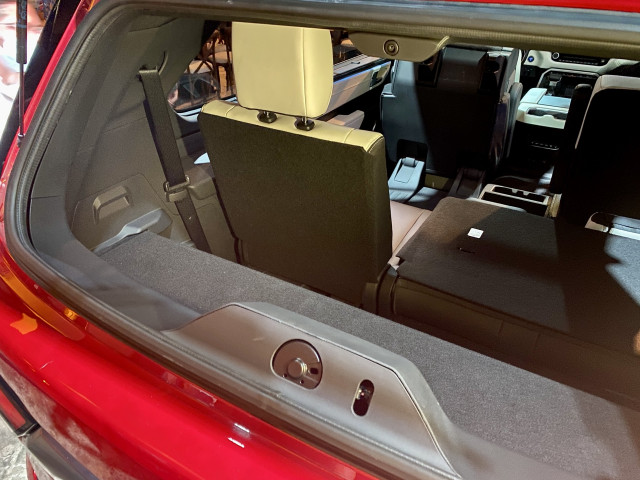
2023 Toyota Sequoia
The Sequoia has a kind of staircase seating, with each row back sitting a bit higher, so knees ride high in the third row. Twin USB-C and USB-A ports as well as cup holder armrests over the wheel wells add some convenience for those in the wayback. Comfort will be lacking, however.
There’s less head room back there, same as in other three-row SUVs, but the further you slide back the seat the less room there is: my 6-foot test model had to slouch. At 5-foot-8, it was tight for me. In the forward-most position, there’s no toe room but at least the rearmost riders won’t fight with their second-row siblings to “moooove up! Dad!”

2023 Toyota Sequoia

2023 Toyota Sequoia
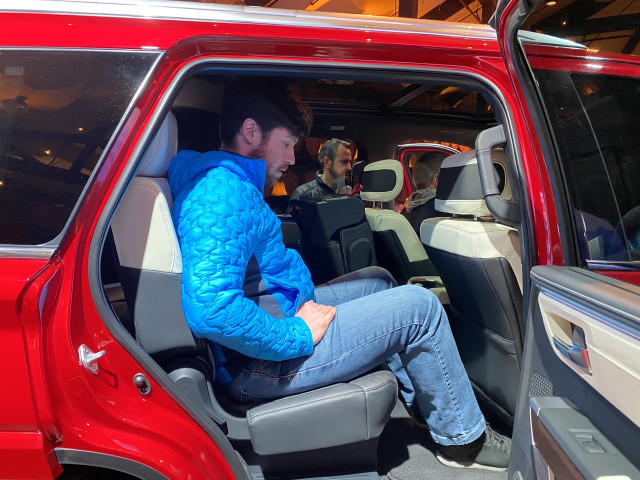
2023 Toyota Sequoia

2023 Toyota Sequoia
The power-folding third row created an interesting cargo opportunity unlike any vehicle we’ve tested. A collapsible cargo shelf measuring 6.0 inches deep can be set in three positions. At its highest, it creates a storage shelf accessible by lifting the glass on the split tailgate. That simplifies grabbing the most urgent needs for the latest trip without lifting the whole gate. The mid-level setting lets you create a flat floor with the folded down third-row seats: If the seats were in their foremost position, the shelf folds open to bridge that gap, otherwise, in the rearmost position, it’s flush. A power-sliding option would minimize the need for the fold-out shelf and add more flexibility. The intention for the lowest setting is less clear. It sits about four inches above the floor and is even with battery pack housing, it appears.
We weren’t able to test everyday use cases to see if that shelf would be more nuisance or convenience, but we will once the 2023 Sequoia goes on sale this summer.

